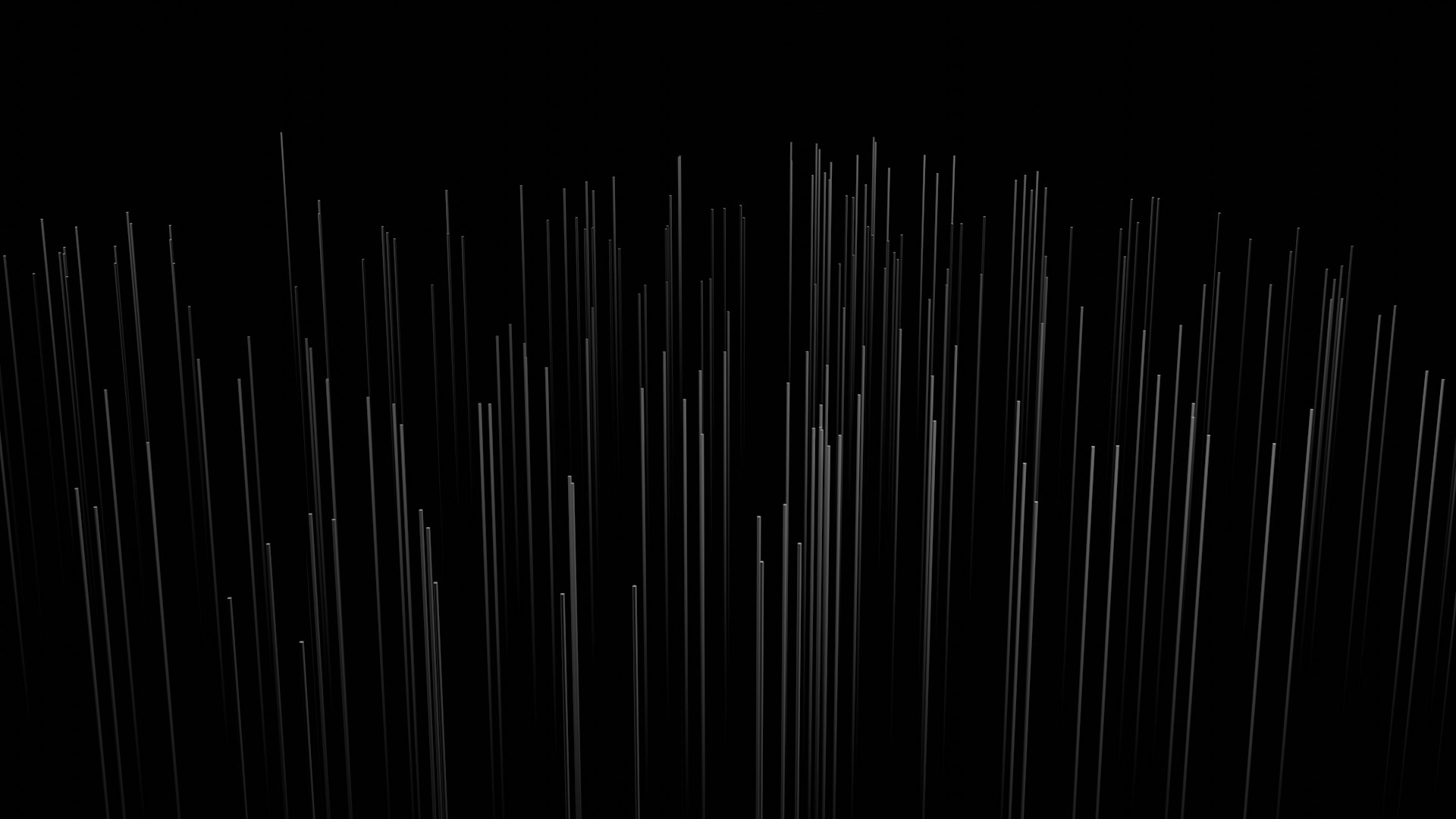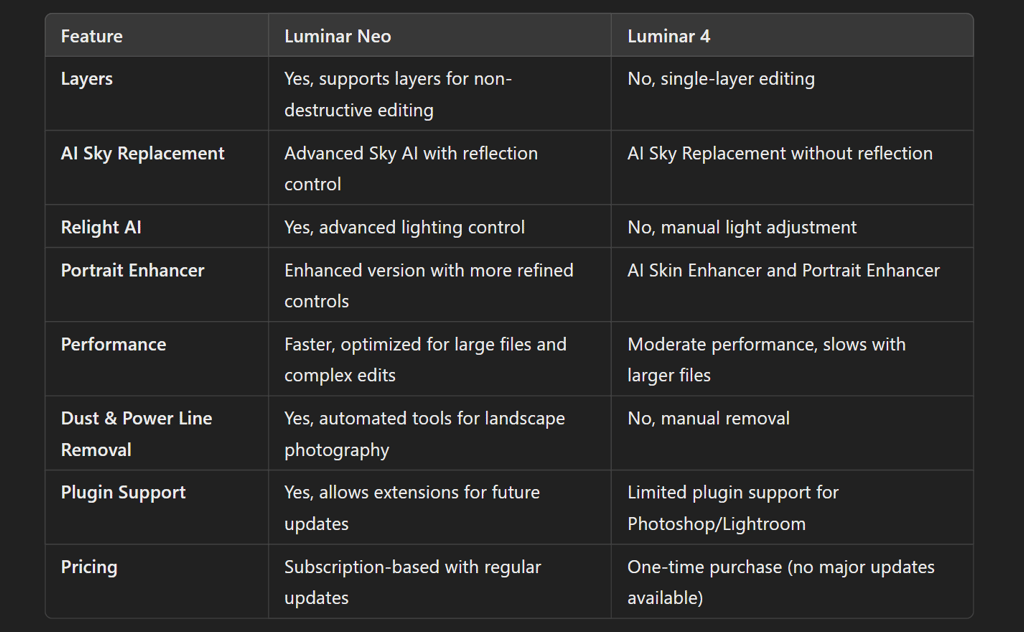
Luminar Neo vs. Luminar 4: Which AI-Powered Photo Editor Reigns Supreme?
Check out a detailed comparison between Skylum's two most powerful AI-powered photo editing tools, Luminar Neo and Luminar 4. This in-depth analysis explores their key features, performance, AI enhancements, and workflow flexibility, helping you choose the best option for your photo editing needs.
AI/FUTUREEDITOR/TOOLSAI ART TOOLSCOMPANY/INDUSTRY
Sachin K Chaurasiya
6/23/20254 min read


In the ever-evolving world of photo editing, AI tools have changed the game by simplifying complex tasks, making professional results accessible to beginners and experienced photographers. The two most notable tools in the AI-powered photo editing space are Luminar Neo and Luminar 4, both developed by Skylum. While Luminar 4 has made its mark as a reliable editing tool, Luminar Neo brings several improvements and new features, giving users more flexibility, creativity, and control.
In this article, we will explore the key differences, features, and benefits of both tools to help you decide which tool best suits your needs.
Introduction to Luminar 4: Simplicity Meets AI Magic!
Luminar 4 is known for its clean interface and straightforward design, providing users with a seamless editing experience. When it was first introduced, it gained immense popularity due to its focus on automation thanks to powerful AI features. Here's what makes Luminar 4 special:
AI-powered tools: Luminar 4’s most striking feature is its AI Sky Replacement. This tool makes it almost effortless to replace the sky in an image, delivering natural and professional-looking results. Additionally, the AI Skin Enhancer and Portrait Enhancer focus on automatically improving skin tones, enhancing facial features, and even removing blemishes.
Preset-based workflow: It is designed for users who prefer a quick, preset-based workflow. You can easily apply filters and templates, transforming the image with just a click. The program handles complex adjustments such as AI Structure, which intelligently enhances the clarity and sharpness of images.
Performance: Luminar 4 performs well on moderate editing tasks, making it ideal for those who don’t need high-level computing power. However, it can slow down with larger files or more intensive editing.
Limitations: The software uses a single-layer editing system, which means that edits are applied in a linear manner. Although this makes it easy to use, it doesn't have the same flexibility as other advanced editing programs. There is also no comprehensive masking or layer system available, which limits the user's ability to fine-tune their edits.


Introducing Luminar Neo: The Future of AI-Driven Editing!
Luminar Neo is a big step forward in Skylum’s AI editing suite. It takes the foundation laid by Luminar 4 and builds on it, offering more advanced tools and greater creative control. For photographers looking for a higher level of flexibility and precision, Luminar Neo delivers in several key areas:
Modular editing system with layers: Unlike Luminar 4, Luminar Neo features a non-destructive workflow with its layer-based editing. This means you can work on multiple layers and experiment with different edits without permanently altering the original image. Layers allow for more complex compositions, similar to Photoshop, giving professional photographers and designers more control over their creative process.
Advanced AI tools: Luminar Neo takes AI to the next level with features like Relight AI and an advanced Sky AI tool. Relight AI allows users to adjust the lighting in an image with precision, making it easy to fix uneven lighting or draw attention to specific areas of a photo. This is especially useful for portraits or images taken in difficult lighting conditions.
The Sky AI tool, a successor to Luminar 4's Sky Replacement, now integrates more naturally with the rest of the image, showing realistic details in water and other reflective surfaces. Neo also introduces Power Lines Removal AI and Dust Removal AI, both of which help clean up distractions in landscape photos without manual intervention.
Performance and speed: Luminar Neo has been optimized for better performance, especially when handling large RAW files or high-resolution images. Its new editing engine processes complex edits faster and allows for a seamless user experience, even when working with large-scale projects.
Extensions and plugins: One of the biggest updates in Luminar Neo is its future-proof design, which supports extensions and plugins. This allows users to integrate additional functionality over time, ensuring Neo remains relevant even as new AI tools and features are developed.

Key Feature Comparison: Luminar Neo vs. Luminar 4!
Let's analyze the key features and compare them to understand how Luminar Neo differs from Luminar 4:


Which One Should You Choose?
The decision between Luminar Neo and Luminar 4 depends largely on your specific needs as a photographer or designer:
Choose Luminar Neo if!
You're looking for more control over your edits with a layer-based system.
You need advanced tools for professional-level work, especially when dealing with lighting, sky replacement, or landscapes.
You work with large files (such as RAW) and want fast performance.
You're excited about future updates and extensions to keep your software relevant and cutting edge.
Choose Luminar 4 if!
You're a beginner or hobbyist who wants an easy-to-use, preset-based editor.
You don't need advanced tools like layers or modular editing.
You prefer a one-time purchase option without a subscription plan.
While Luminar 4 was revolutionary at the time of its release, Luminar Neo has taken the photo editing experience to a whole new level, offering better performance, more advanced tools, and more flexibility. For those serious about photography and looking for professional-grade tools, Neo is the obvious choice. However, if you’re more interested in quick edits and prefer simplicity over advanced features, Luminar 4 is a solid choice.
Both tools have their own unique strengths, but Luminar Neo is designed with the future in mind, ensuring it will continue to evolve as AI technology develops.
Subscribe to our newsletter
All © Copyright reserved by Accessible-Learning
| Terms & Conditions
Knowledge is power. Learn with Us. 📚


